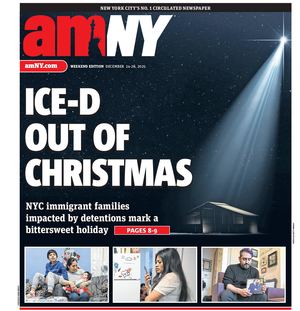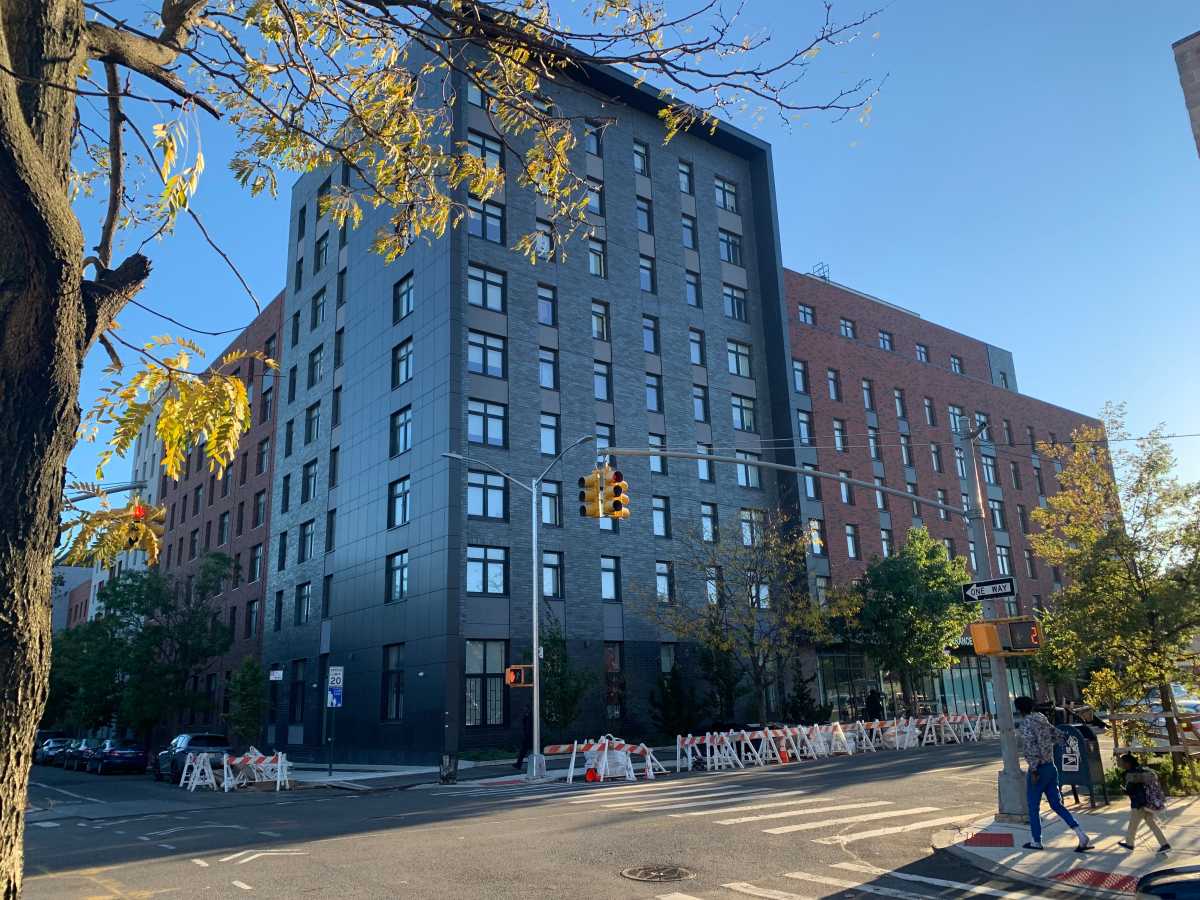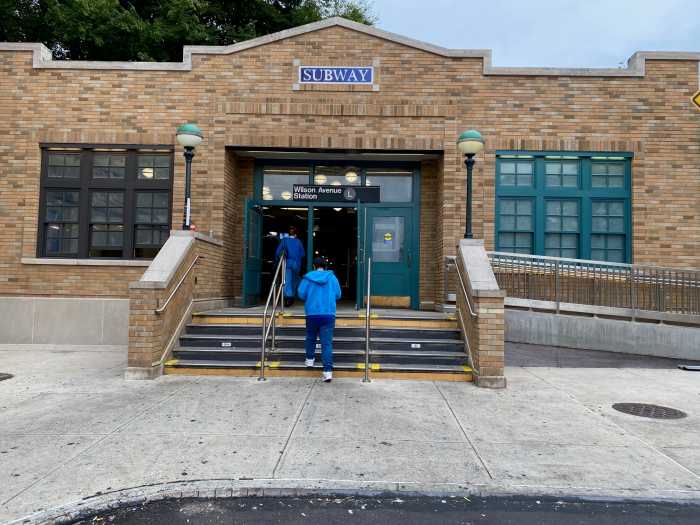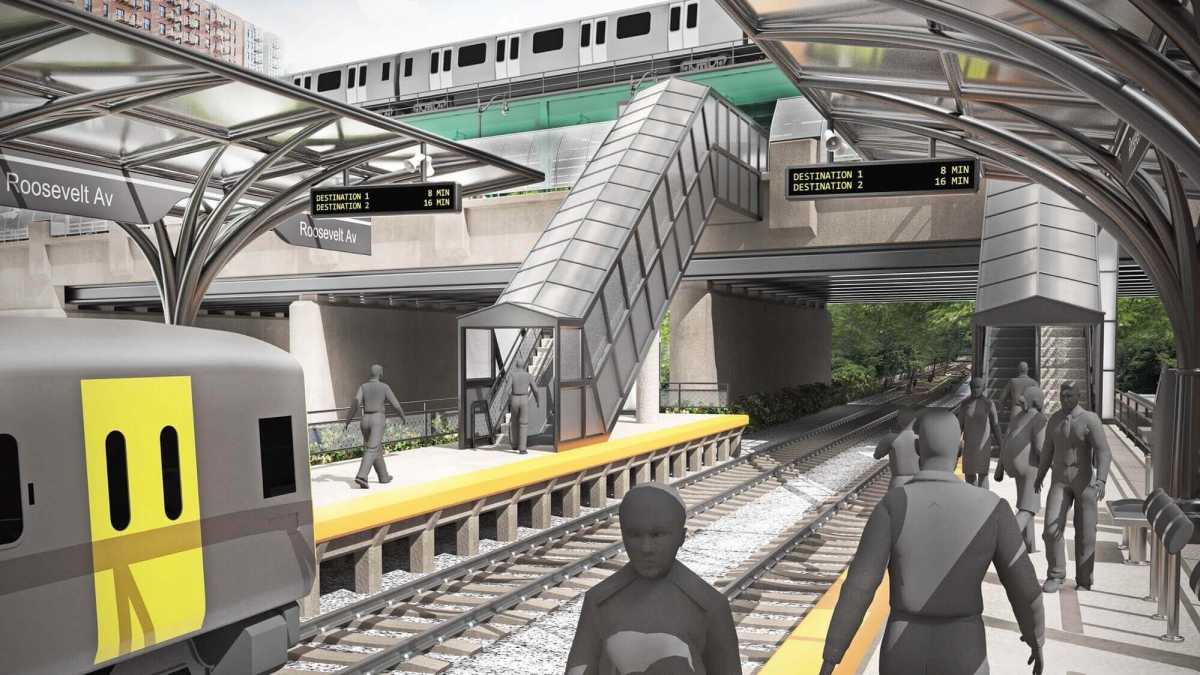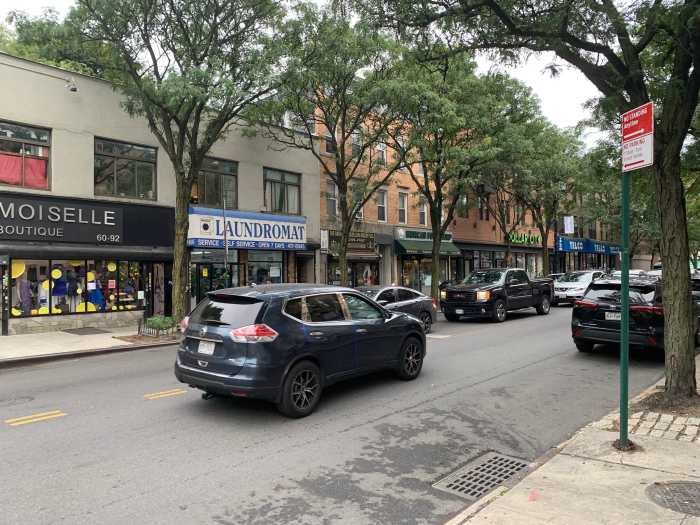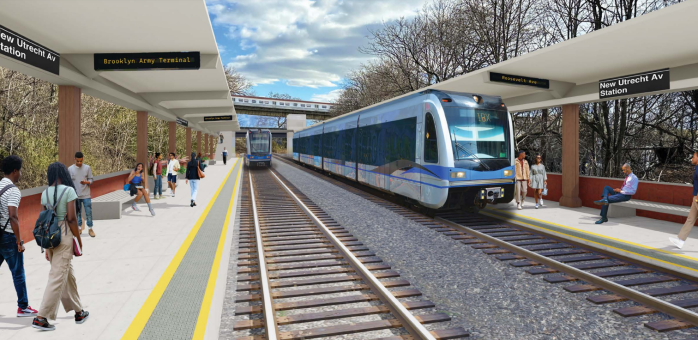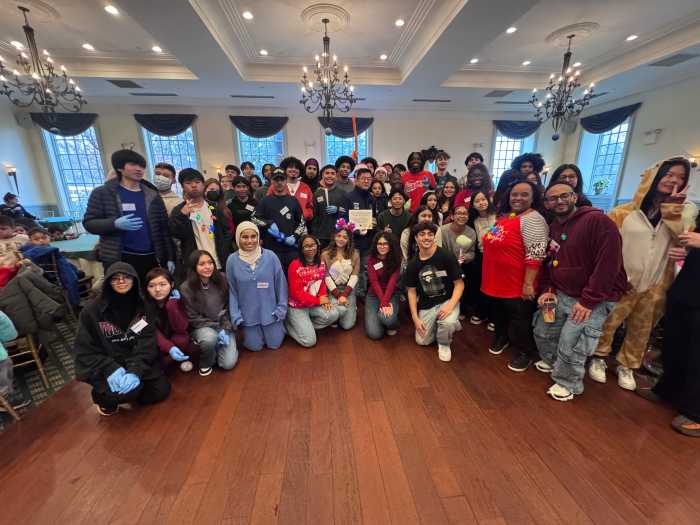History and railroad lovers will enjoy the IBX’s next stop on Sutter Avenue. This stop offers a glimpse into the vibrant history of East New York, the neighborhood’s charm and a practical connection to the L train.
As the MTA’s proposed 14-mile light rail line continues its north-south journey from Jackson Heights to the Brooklyn Army Terminal, there is a historic neighborhood along the tracks that is going through a revitalization. That area is industrial East New York, a neighborhood poised to get an IBX stop on Sutter Avenue.
The stop is one of three planned for the IBX, formerly known as the Interborough Express, in the East New York area. It is sandwiched between Atlantic Avenue to the north and Livonia Avenue to the south.
Local residents who were at the Sutter Avenue station on a recent Thursday said they are looking forward to the new rail line coming to their borough.
“This is great for me,” one man said. “I work at the U.S. Open in the summer, and it’ll really cut down on time.”
Another passerby was not familiar with the proposed train, but said it “sounds like a good idea.”
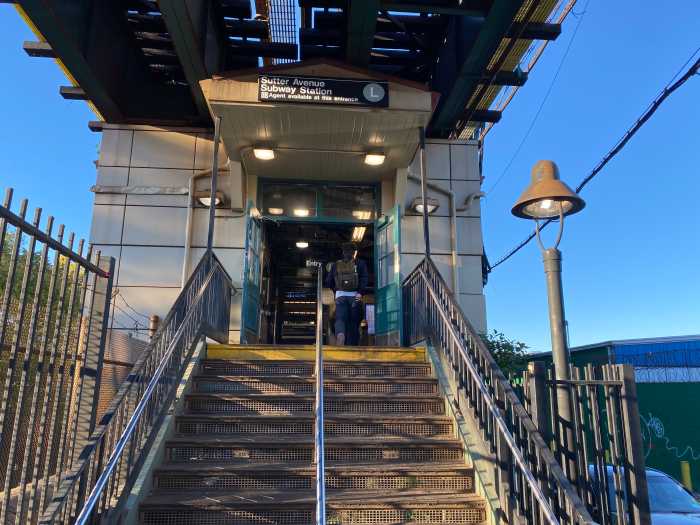
East New York is a close-knit community with a deep history. A look back to the 1890s — and later — reveals a vibrant and populous neighborhood that thrived when a train line was built. It was an epicenter of entertainment, theater and housing that lined two of its main thoroughfares, Pitkin and Sutter Avenues. Throngs of New Yorkers were attracted to the area, which rivaled Broadway, with theaters such as the Biltmore, Gotham and Loews.
These establishments are long gone, but their echoes live on in the footprint of East New York.
The neighborhood established its own town hall in 1873. The “sturdy, two-story-plus-basement brick building housed town offices on the ground floor, and the fire department on the upper floor, in a large open room,” an article in Brownstoner, a sister publication of amNewYork, explained.
“In 1878, a new law required towns to house a police force, and the town hall was called into duty again,” the article continued. “Everyone was shuffled around and squeezed into the building. Downstairs became the town meeting room and clerk’s office, the fire headquarters office, and the police receiving desk and muster room.”
When the five boroughs consolidated to form New York City in 1898, the building was no longer needed as a town hall. Since then, it has had many uses, including a police station, hospital and residence.
East New York today
In recent years, East New York has undergone gradual changes, primarily through the addition of new housing. The city rezoned the neighborhood, especially in areas by the East New York train stations, to make it easier to build more homes, including high-density apartment buildings.
“Historically known as a predominantly working-class and African-American community, East New York has experienced significant changes in recent years, including an influx of new residents and an increase in development,” writes the website, City Neighborhoods. “Despite these changes, East New York retains its unique character, with vibrant street life and numerous community events throughout the year.”
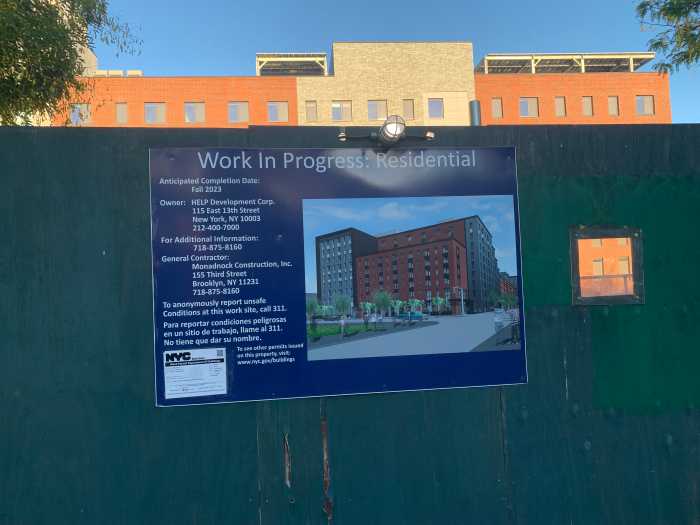
However, civic leaders are concerned that the new housing may gentrify the community, leading to increased housing costs that would price out long-time residents.
Boris Santos, president of the East New York Community Land Trust, said he recognizes the value of a direct train link between the two boroughs, but does not want residents to be displaced if local housing becomes too expensive.
“It gets the mission of transit equity and access, especially among working-class neighborhoods, but I would be remiss if I didn’t state the real estate concerns,” Santos explained. “Where there is public or private investment in infrastructure development or housing development, you tend to heat up the market.”
In other words, real estate prices go up. Santos’ organization, he explained, works to protect land and ensure it remains permanently affordable for families, especially at a time when many New Yorkers are leaving the city.
Some politicians and civic leaders have said rezoning and investments in public spaces can change a neighborhood’s character. Santos cited NYC Economic Development Corporation’s plans to build public plazas at Broadway Junction, along with zoning changes that occurred as far back as 2016 under former Mayor Bill de Blasio, as threats to East New York’s affordability.
“All of that brings fear of opening a Pandora’s box of gentrification and mass displacement,” Santos said. “You’re going to see an increase in property taxes because of real estate. And it trickles down to rent values, as well.”
Gary Giordano, the district manager of Queens Community Board 5, shared similar thoughts with amNewYork last month about gentrification in Ridgewood and Glendale, two other neighborhoods where the IBX plans to stop.
He said the IBX will be a benefit for public transit users who need to get from one part of Queens or Brooklyn to another fast because it cuts down on time without having to go through Manhattan. But, it could also change a neighborhood, especially combined with other government developments, such as Mayor Eric Adams’ recent win with a historic zoning overhaul aimed at fixing the city’s housing crisis.
“From the standpoint of neighborhood charm, it could be made nice,” Giordano said. “But here’s the kicker. I think there is concern that with the City of Yes proposal for additional housing, that if you are in reasonable proximity to a train station, what is the risk of development that is out of character with the existing housing?”
City of Yes, which some political experts have described as Adams’ signature accomplishment as mayor, amends the city zoning law to build more housing in neighborhoods that had previously restricted development. It is estimated to create about 82,000 new homes within 15 years.
Preserving employment
No matter how much or how little East New York changes, its rich history will always live on. In addition to the theaters that thrived here, the neighborhood’s history is marked by commercial vitality.
In 1922, the iconic department store Fortunoff opened its doors on Livonia Avenue at the East New York/Brownsville border, quickly becoming one of New York’s most recognizable retailers. Its presence made the area a bustling commercial hub. The neighborhood also played host to significant industrial enterprises, such as Sunnydale Farms, which occupied an entire block on Stanley Avenue, providing jobs and contributing to the local economy.
Today, various industrial businesses, including school bus parking lots, scrap yards and autobody shops, line the streets of East New York. Santos, of the land trust group, hopes that with the new rail line, the city will continue to prioritize job creation and employment stability within East New York.
“Another concern, beyond the real estate values going up, is the industrial business zone being protected,” he said. “The biggest source of commuting is people’s work. And an industrial business zone is a source of employment. It’s where industry is supposed to live.”
Santos fears the IBX, along with other types of development, could spark a desire to change East New York’s industrial areas into housing.
“Don’t get me wrong, there’s a housing crisis. People need shelter, but also in East New York, where we’ve developed the most amount of affordable housing than any other community in the past decade, we want employment,” he said.
To Santos, the IBX should be a balance between improved infrastructure and more transit while ensuring residents have employment and economic stability.
“Maintaining employment should be protected,” he said.
The next stop in our IBX: Stop by Stop series is Livonia Avenue.
